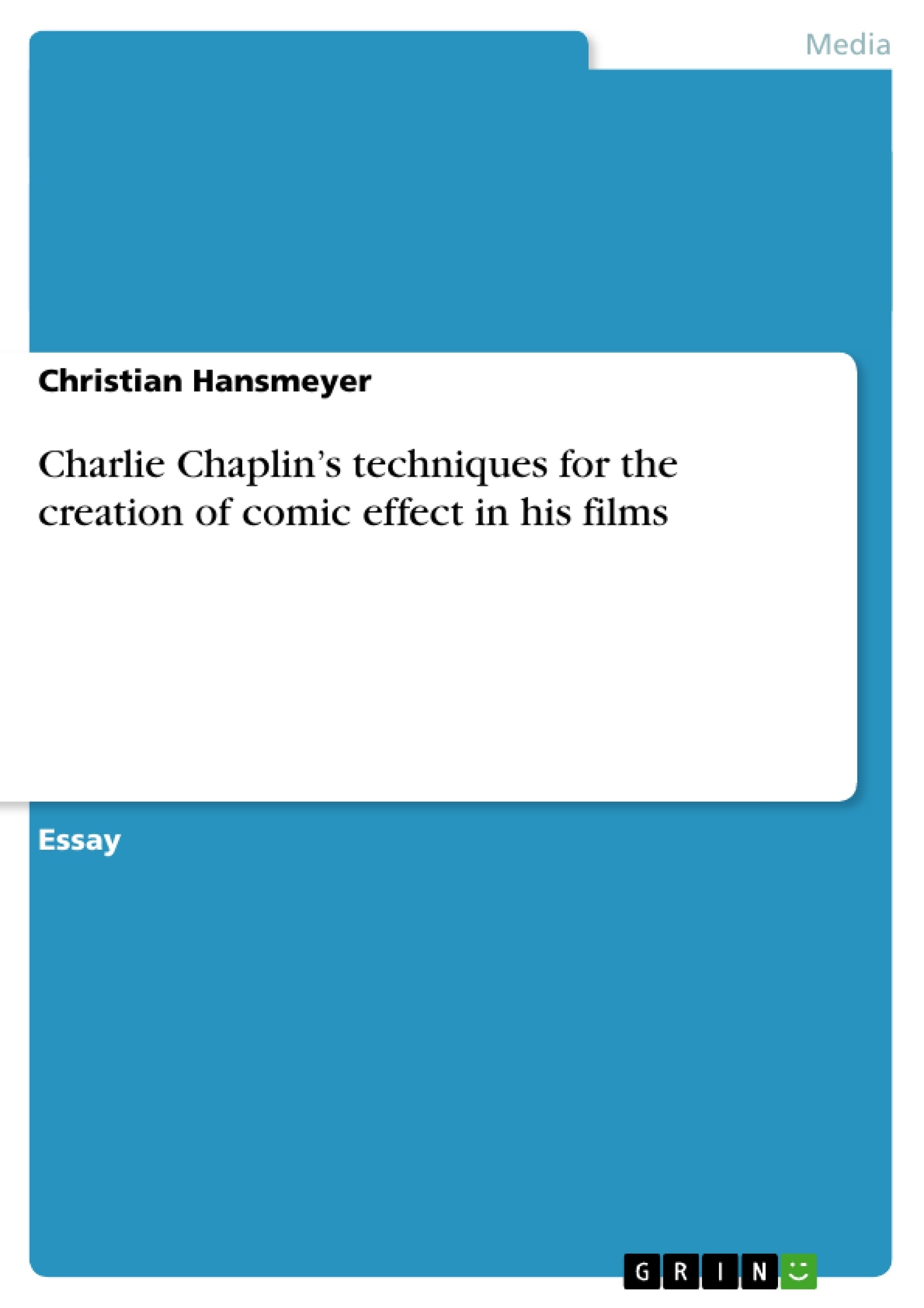Excerpt
Contents
Introduction
The Creation of The Tramp
Chaplin’s Comic Effect Techniques
Development in Techniques
Conclusion
Bibliography
Introduction
Even 47 years after his last appearance in the film Limelight (1952) and 22 years after his death in 1977, Charles Spencer Chaplin is one of the most famous characters and well-known actors of all times and is regarded as the greatest creative figure in the movies. Chaplin’s capacity for comic invention and his high quality of film output are outstanding among the film producers of his time. His comedies and satires, most of them directed by Chaplin himself, used to amuse people all around the world and still make us laugh today.
Apart from acting, directing and composing the music for his own films by himself, Chaplin developed his own techniques for the creation of comic effects, which can always be identified as his own style and is distinguished from those of other comedians of the twenties, for example Lloyd, Keaton or Langdon.
This essay will focus on these techniques and their development during the career of Charlie Chaplin.
The Creation of The Tramp
In 1914, during his period at Keystone Studios, Chaplin created his famous tramp character; an image that found its way into film history.
The mere outfit and appearance of the Tramp alone is funny: a short, tiny man with a black moustache and a baggy suit, consisting of a too-tight jacket, too-loose trousers, oversize boots and undersize bowler-hat; the Tramp also wore gloves, tie and wing collar and carried a cane. This costume, contradicting in itself with its too-small and too-wide pieces, as well as his moustache made Chaplin easily recognisable by the audience.
It was not only the costume, which became famous. The specific movements and the physical expression of the little Tramp were bound to this character. Both his outfit and his movements could at once be recognised by everyone. The Tramp appeared as a person with a twitchy expression and a waddling penguin-like walk, shuffling his little cane and giving a serious air. This typical walk, with his feet turned outwards, made people laugh without another additional acting or miming. Chaplin’s body language was of a “dancer’s control of movement, and his astonishing agility, began to touch the hearts of his audiences with his laugh-provoking silhouette, the small bowler perched on his curly mop of hair […].”[1]
When Chaplin created the short film The Tramp in 1915, he created a comedy, which contained for the first time a character we meet over and over again in slight variations in his following films. The Tramp is a poor, unfortunate and unemployed man, always at the bottom and out of step with of the society. He is often the down and out, a displaced person, representing a figure everybody can identify and sympathise with, because he is always unluckier than those watching the films. People sympathise with the “underdog” and amuse themselves about the ridicule included in the particular tragic situations. Chaplin accentuates his “helplessness by drawing his shoulders in, drooping his lip pathetically and looking frightened.”[2]
What makes him even more likeable is him being the odd man and a dreamer, playing a hero in his dreams. Chaplin actually uses dream sequences in several films of his – The Bank (1915), Sunnyside (1919) and The Kid (1921). The funny costumes and figures, an angel in The Kid, and chicken in the delirium scene in The Gold Rush are fantastic as well as funny.
[...]
[1] Cotes, Peter / Niklaus, Thelma (1952). The Little Fellow. p. 97
[2] McCaffrey, Donald W. (1971). Focus On Chaplin. p. 51
- Quote paper
- Christian Hansmeyer (Author), 1999, Charlie Chaplin’s techniques for the creation of comic effect in his films, Munich, GRIN Verlag, https://www.grin.com/document/9087
Publish now - it's free






















Comments